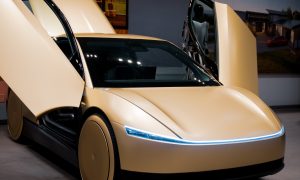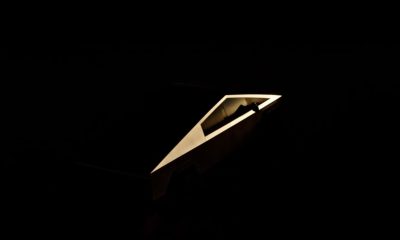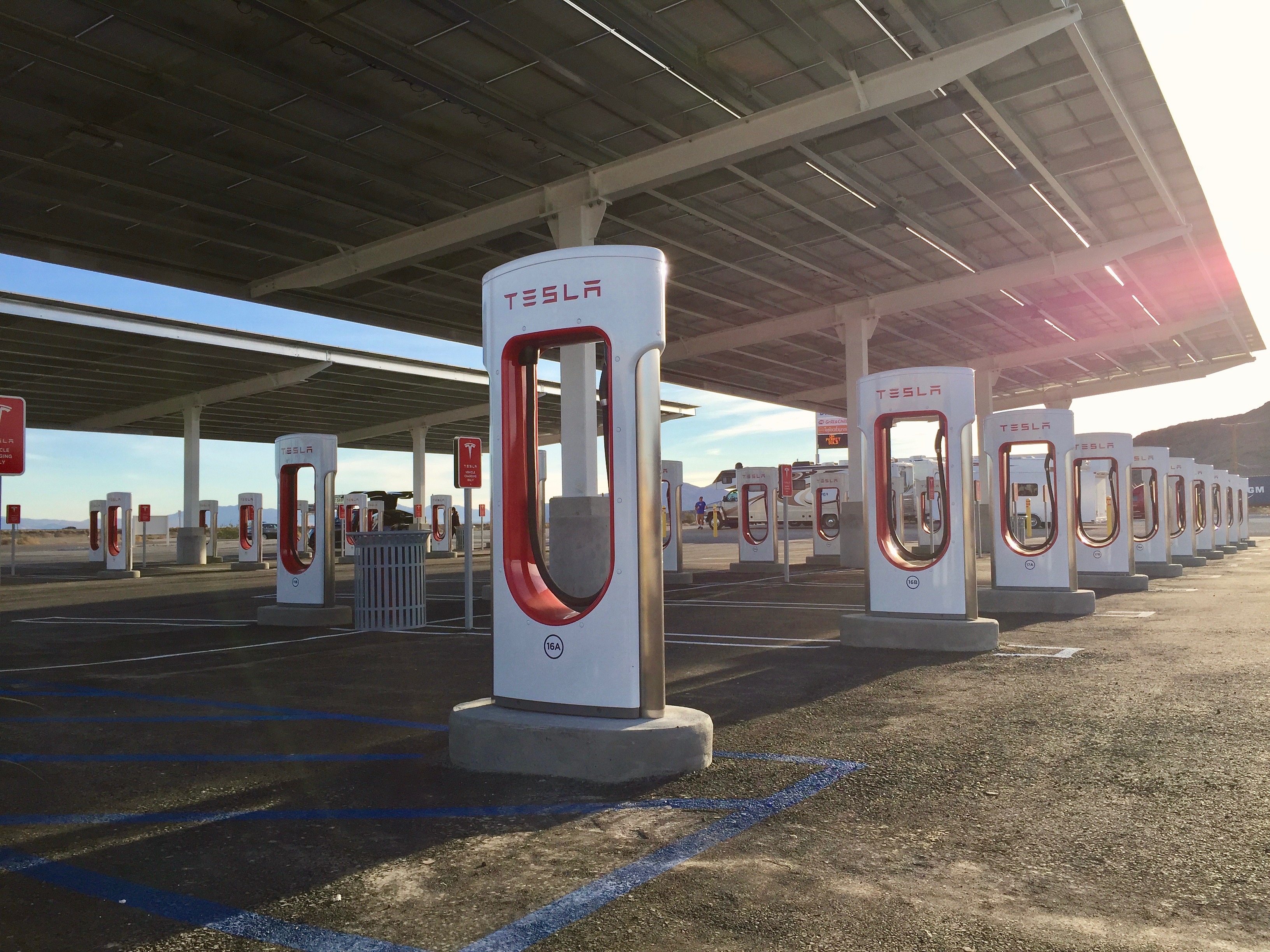

News
Tesla updates Supercharger pricing structure, rolls out in-car payment feature
Tesla has updated the pricing structure for its Supercharger network, including terms for its existing idle fee policy. The idle fee update will impact all Model S, Model X, and Model 3 drivers that utilize the company’s high-powered, global charging network, regardless of whether they are enrolled in free unlimited Supercharging or not.
Supercharger idle fees, first introduced in late 2016 as a means to deter vehicle owners from occupying a charging stall when the vehicle has already met its intended state of charge, have been updated to further encourage owners to move their vehicles from stalls and improve the Supercharging experience for all drivers. Tesla has updated the flat idle fee of $0.40/minute to take into account station occupancy, as follows:
Supercharger Idle Fee
(updated September 19, 2018)
- Supercharger 50% occupied: $0.50/minute idle fee
- Supercharger 100% occupied: $1.00/minute idle fee
Tesla notes in its Supercharger FAQ that drivers will be granted a 5-minute grace period during which time a fee will not be incurred. Once this grace period passes, the driver will be charged for the 5-minutes and each additional minute after that. Vehicle owners will continue to receive reminders through Tesla’s app when the vehicle is nearing its intended state of charge.
In-car Payment
Additionally, Tesla has begun to roll out an over-the-air software update (not Version 9) that will include a new in-car payment feature. The new functionality will provide Model S, Model X, and Model 3 owners who leverage pay-per-use Supercharging with the ability to pay from within their vehicle, by inputting credit card information directly into the center touchscreen. The feature will also enable drivers to pay for any incurred idle fees.
The in-car payment functionality is an extension of the credit card section within an owner’s Tesla Account page, or previously known as the MyTesla page. Credit card information entered through the in-car payment feature will automatically be registered to the vehicle owner’s Tesla account and also serve as payment for any incurred idle fees or Supercharger use fees.
Also introduced in today’s Supercharger pricing structure update is a $50.00 cap wherein Supercharger access will automatically be disabled if there’s an outstanding balance due for Supercharger fees, either incurred through idle fees or Pay Per Use, and when a credit card is not on file. Supercharger access will instantly re-enable once the balance is paid. Tesla will also have the ability to grant Supercharger access to a vehicle, remotely, in the event of an emergency.
The pricing update and software release are being implemented in North America first, followed by a global rollout.
It’s About the Greater Good
Although the latest Supercharger update may be unwelcomed by some Tesla owners that have previously benefitted from the company’s good faith gesture to extend its charging network, largely unenforced, to its drivers, the change is an improvement to its policy that has a significant benefit to the overall community.
When the Silicon Valley-based electric carmaker first created its Supercharger network, the intention was to make long-distance travel an enjoyable and seamless experience for all drivers. But as Supercharger abuse became more rampant, combined with a massive increase in the number of Model S, Model X and Model 3 on the roads, being able to institute some sort of Supercharger fair-use enforcement policy became desperately needed. This is in spite of Tesla’s continued global scale out of its Supercharger and Destination charging network.
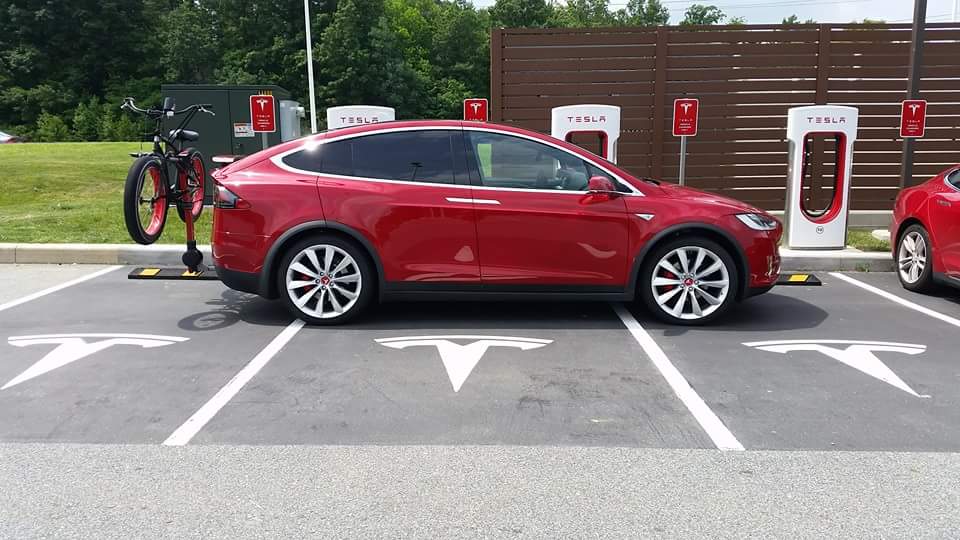
A Model X spotted occupying three Supercharger stalls at the Newark, DE Supercharger station went viral in 2016 after sparking outrage across the Tesla community.
Related: Calling all Tesla Supercharger abusers: Don’t ruin it for the rest of us
Today’s update to Tesla’s Supercharger policy will undoubtedly be one of many in the years to come, as the company continues to adjust and iterate toward a customer experience-focused model that’s also financially feasible.
A Tesla spokesperson tells Teslarati, “Based on feedback from the Tesla owner community, we are adjusting the idle fees associated with our Supercharging program to continue providing the best Supercharging experience as the size of our fleet grows. As has always been the case, our Supercharging and associated fees charged on the network are not meant to be a profit center for Tesla, and we hope to never need to bill for idle fees.”
More information can be found on Tesla’s Supercharger page.
Elon Musk
Tesla begins expanding Robotaxi access: here’s how you can ride
You can ride in a Tesla Robotaxi by heading to its website and filling out the interest form. The company is hand-picking some of those who have done this to gain access to the fleet.

Tesla has begun expanding Robotaxi access beyond the initial small group it offered rides to in late June, as it launched the driverless platform in Austin, Texas.
The small group of people enjoying the Robotaxi ride-hailing service is now growing, as several Austin-area residents are receiving invitations to test out the platform for themselves.
The first rides took place on June 22, and despite a very small number of very manageable and expected hiccups, Tesla Robotaxi was widely successful with its launch.
Tesla Robotaxi riders tout ‘smooth’ experience in first reviews of driverless service launch
However, Tesla is expanding the availability of the ride-hailing service to those living in Austin and its surrounding areas, hoping to gather more data and provide access to those who will utilize it on a daily basis.
Many of the people Tesla initially invited, including us, are not local to the Austin area.
There are a handful of people who are, but Tesla was evidently looking for more stable data collection, as many of those early invitees headed back to where they live.
The first handful of invitations in the second round of the Robotaxi platform’s Early Access Program are heading out to Austin locals:
I just got a @robotaxi invite! Super excited to go try the service out! pic.twitter.com/n9mN35KKFU
— Ethan McKanna (@ethanmckanna) July 1, 2025
Tesla likely saw an influx of data during the first week, as many traveled far and wide to say they were among the first to test the Robotaxi platform.
Now that the first week and a half of testing is over, Tesla is expanding invites to others. Many of those who have been chosen to gain access to the Robotaxi app and the ride-hailing service state that they simply filled out the interest form on the Robotaxi page of Tesla’s website.
That’s the easiest way you will also gain access, so be sure to fill out that form if you have any interest in riding in Robotaxi.
Tesla will continue to utilize data accumulated from these rides to enable more progress, and eventually, it will lead to even more people being able to hail rides from the driverless platform.
With more success, Tesla will start to phase out some of the Safety Monitors and Supervisors it is using to ensure things run smoothly. CEO Elon Musk said Tesla could start increasing the number of Robotaxis to monitors within the next couple of months.
Elon Musk
Tesla analyst issues stern warning to investors: forget Trump-Musk feud
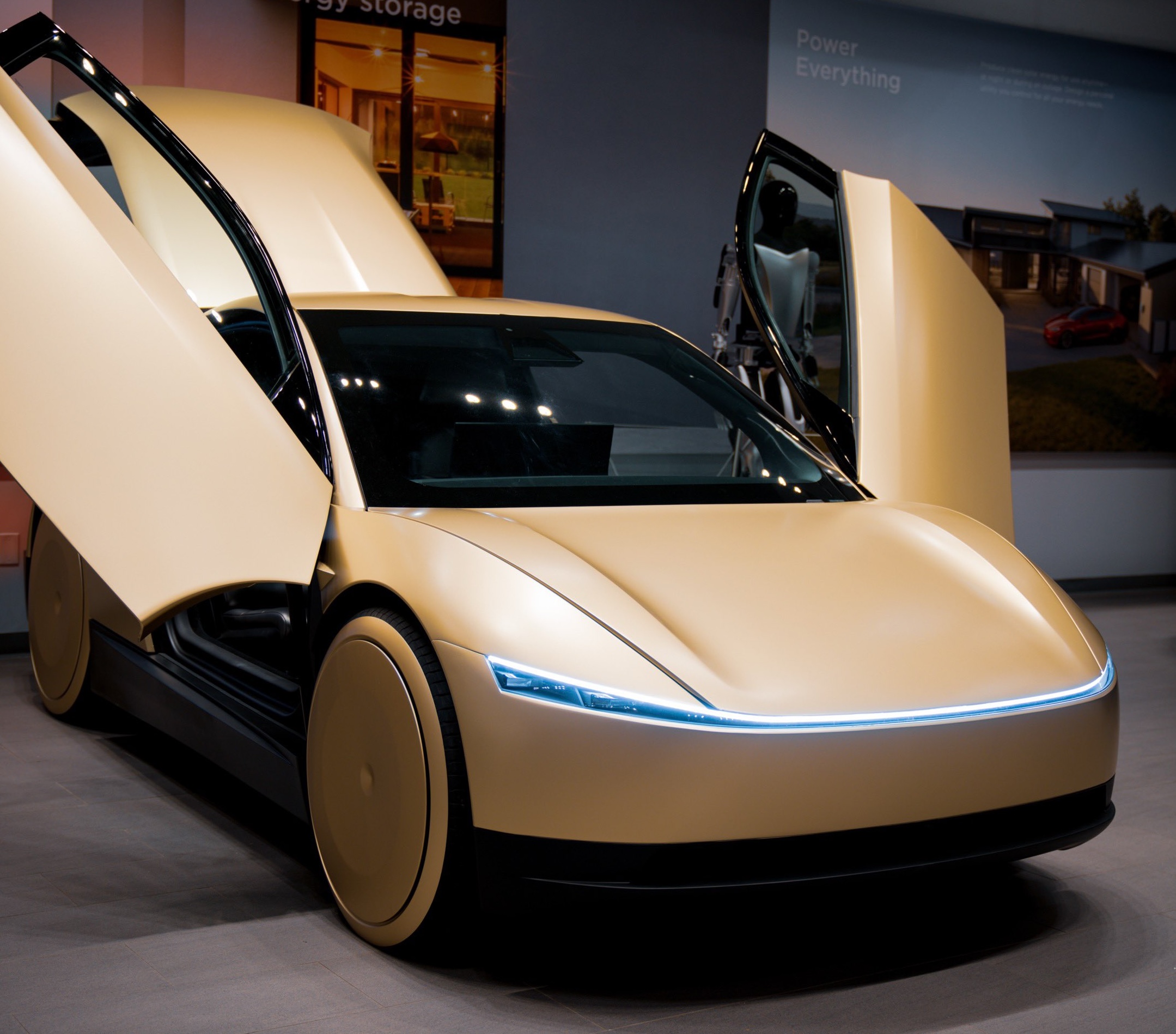
A Tesla analyst today said that investors should not lose sight of what is truly important in the grand scheme of being a shareholder, and that any near-term drama between CEO Elon Musk and U.S. President Donald Trump should not outshine the progress made by the company.
Gene Munster of Deepwater Management said that Tesla’s progress in autonomy is a much larger influence and a significantly bigger part of the company’s story than any disagreement between political policies.
Munster appeared on CNBC‘s “Closing Bell” yesterday to reiterate this point:
“One thing that is critical for Tesla investors to remember is that what’s going on with the business, with autonomy, the progress that they’re making, albeit early, is much bigger than any feud that is going to happen week-to-week between the President and Elon. So, I understand the reaction, but ultimately, I think that cooler heads will prevail. If they don’t, autonomy is still coming, one way or the other.”
BREAKING: GENE MUNSTER SAYS — $TSLA AUTONOMY IS “MUCH BIGGER” THAN ANY FEUD 👀
He says robotaxis are coming regardless ! pic.twitter.com/ytpPcwUTFy
— TheSonOfWalkley (@TheSonOfWalkley) July 2, 2025
This is a point that other analysts like Dan Ives of Wedbush and Cathie Wood of ARK Invest also made yesterday.
On two occasions over the past month, Musk and President Trump have gotten involved in a very public disagreement over the “Big Beautiful Bill,” which officially passed through the Senate yesterday and is making its way to the House of Representatives.
Musk is upset with the spending in the bill, while President Trump continues to reiterate that the Tesla CEO is only frustrated with the removal of an “EV mandate,” which does not exist federally, nor is it something Musk has expressed any frustration with.
In fact, Musk has pushed back against keeping federal subsidies for EVs, as long as gas and oil subsidies are also removed.
Nevertheless, Ives and Wood both said yesterday that they believe the political hardship between Musk and President Trump will pass because both realize the world is a better place with them on the same team.
Munster’s perspective is that, even though Musk’s feud with President Trump could apply near-term pressure to the stock, the company’s progress in autonomy is an indication that, in the long term, Tesla is set up to succeed.
Tesla launched its Robotaxi platform in Austin on June 22 and is expanding access to more members of the public. Austin residents are now reporting that they have been invited to join the program.
Elon Musk
Tesla surges following better-than-expected delivery report
Tesla saw some positive momentum during trading hours as it reported its deliveries for Q2.

Tesla (NASDAQ: TSLA) surged over four percent on Wednesday morning after the company reported better-than-expected deliveries. It was nearly right on consensus estimations, as Wall Street predicted the company would deliver 385,000 cars in Q2.
Tesla reported that it delivered 384,122 vehicles in Q2. Many, including those inside the Tesla community, were anticipating deliveries in the 340,000 to 360,000 range, while Wall Street seemed to get it just right.
Tesla delivers 384,000 vehicles in Q2 2025, deploys 9.6 GWh in energy storage
Despite Tesla meeting consensus estimations, there were real concerns about what the company would report for Q2.
There were reportedly brief pauses in production at Gigafactory Texas during the quarter and the ramp of the new Model Y configuration across the globe were expected to provide headwinds for the EV maker during the quarter.
At noon on the East Coast, Tesla shares were up about 4.5 percent.
It is expected that Tesla will likely equal the number of deliveries it completed in both of the past two years.
It has hovered at the 1.8 million mark since 2023, and it seems it is right on pace to match that once again. Early last year, Tesla said that annual growth would be “notably lower” than expected due to its development of a new vehicle platform, which will enable more affordable models to be offered to the public.
These cars are expected to be unveiled at some point this year, as Tesla said they were “on track” to be produced in the first half of the year. Tesla has yet to unveil these vehicle designs to the public.
Dan Ives of Wedbush said in a note to investors this morning that the company’s rebound in China in June reflects good things to come, especially given the Model Y and its ramp across the world.
He also said that Musk’s commitment to the company and return from politics played a major role in the company’s performance in Q2:
“If Musk continues to lead and remain in the driver’s seat, we believe Tesla is on a path to an accelerated growth path over the coming years with deliveries expected to ramp in the back-half of 2025 following the Model Y refresh cycle.”
Ives maintained his $500 price target and the ‘Outperform’ rating he held on the stock:
“Tesla’s future is in many ways the brightest it’s ever been in our view given autonomous, FSD, robotics, and many other technology innovations now on the horizon with 90% of the valuation being driven by autonomous and robotics over the coming years but Musk needs to focus on driving Tesla and not putting his political views first. We maintain our OUTPERFORM and $500 PT.”
Moving forward, investors will look to see some gradual growth over the next few quarters. At worst, Tesla should look to match 2023 and 2024 full-year delivery figures, which could be beaten if the automaker can offer those affordable models by the end of the year.
-

 Elon Musk2 days ago
Elon Musk2 days agoTesla investors will be shocked by Jim Cramer’s latest assessment
-

 News1 week ago
News1 week agoTesla Robotaxi’s biggest challenge seems to be this one thing
-

 Elon Musk2 weeks ago
Elon Musk2 weeks agoElon Musk slams Bloomberg’s shocking xAI cash burn claims
-

 News2 weeks ago
News2 weeks agoTexas lawmakers urge Tesla to delay Austin robotaxi launch to September
-

 Elon Musk1 week ago
Elon Musk1 week agoFirst Look at Tesla’s Robotaxi App: features, design, and more
-
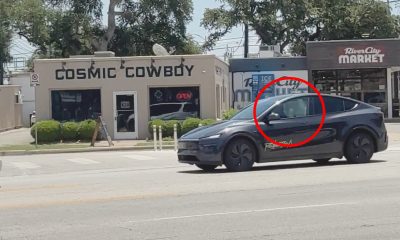
 Elon Musk2 weeks ago
Elon Musk2 weeks agoTesla Robotaxis are becoming a common sight on Austin’s public roads
-

 Elon Musk2 weeks ago
Elon Musk2 weeks agoSpaceX President meets India Minister after Starlink approval
-

 Elon Musk2 weeks ago
Elon Musk2 weeks agoxAI’s Grok 3 partners with Oracle Cloud for corporate AI innovation


